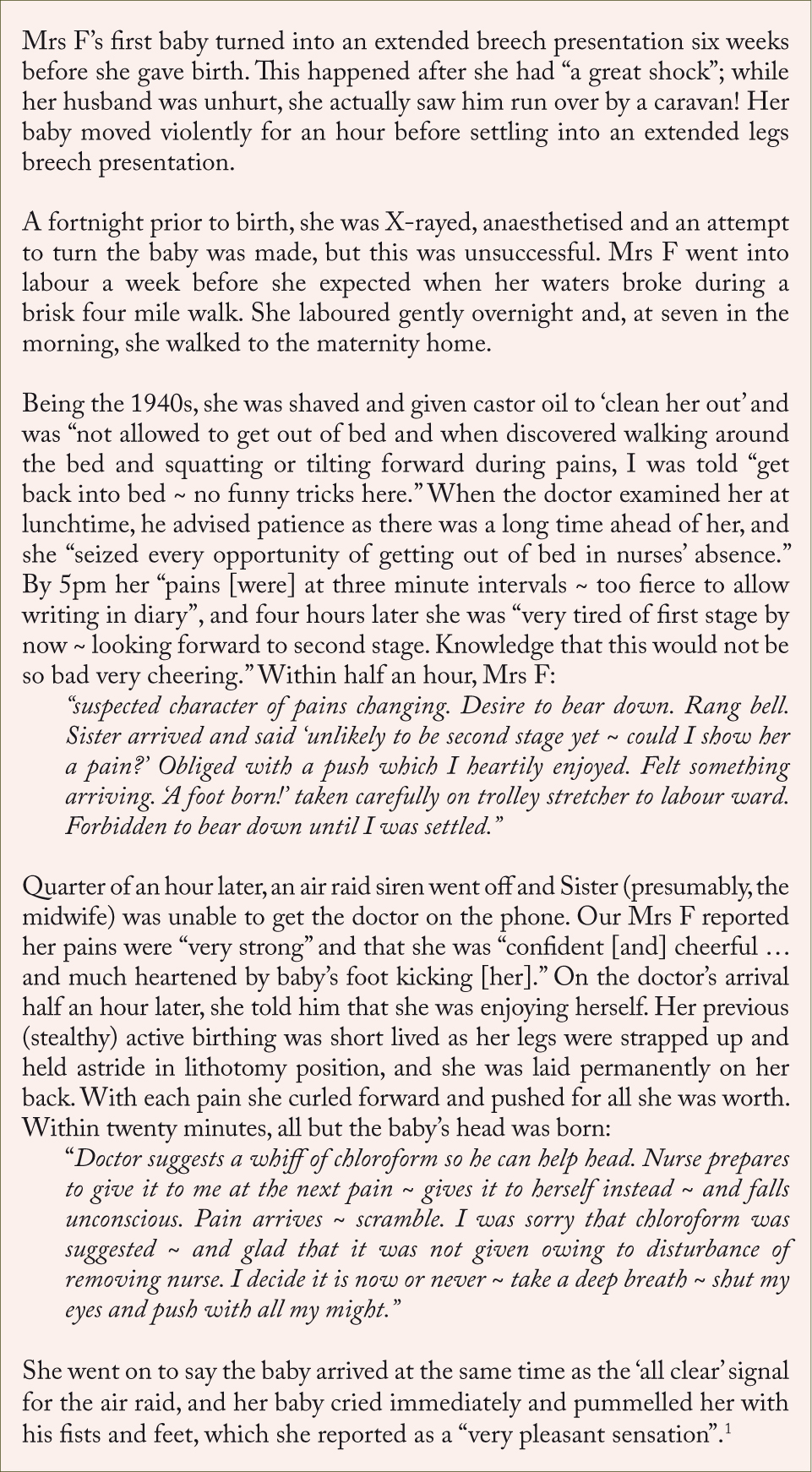This post was originally published in Birthspirit Midwifery Journal 2009; 1: 64-65. Updated.
 As steeped in medically and midwifery managed birthing as this 60-plus year old breech story Randall (1949, pp. 81-84) is, it has (at least) three central themes – a woman who was confident about giving birth, an active (until the end), non-medicated labour, and a skilled, though medicalised, practitioner who supported vaginal breech birth.
As steeped in medically and midwifery managed birthing as this 60-plus year old breech story Randall (1949, pp. 81-84) is, it has (at least) three central themes – a woman who was confident about giving birth, an active (until the end), non-medicated labour, and a skilled, though medicalised, practitioner who supported vaginal breech birth.
These themes have undergone remarkable shifts in the last 15 years, and not only because the Term Breech Trial bedded down surgical birth for breech babies. Preceding that, the significant loss of breech skills by medical practitioners and midwives had begun and, as a result, an increasing loss of confidence to support women during labour and birth with their breech babies, was becoming evident.
Attempts are being made to address this loss of skills and build confidence. On an international level, the 2006 1st International Breech Birth Conference in Vancouver brought together many of us who are passionate about, and actively working towards, regaining and retaining these skills, and networking is ongoing. At the end of last year I presented at an education session for obstetric registrars in South Auckland on active breech birth and, while these obstetricians-in-training lamented their lack of experience with vaginal breech birth, there was a genuine desire from some of those present to acquire those skills. Facilitating breech birth is a component of ongoing education offered for registered midwives beyond the initial undergraduate education. Finally, there is good support amongst hundreds of midwives in New Zealand, both that I have spoken with, and where the issue is debated Health & Disability Commissioner (2006), to support women during physiological breech birth (at least) where they cannot get obstetric support.
While debate and ongoing knowledge development of active breech birth will be addressed in subsequent issues and in other fora, it is high time we start to consider some midwifery issues which run alongside skills development so midwives feel safe and supported to care for women during vaginal breech birth:
- When it arises, what are we doing to address the giving, despite an evidence-informed guideline New Zealand Guidelines Group (2004), of inappropriate, scare-mongering information during obstetric consultation that gives rise to the commonly heard – “if a woman wants to give birth naturally before she sees the obstetrician, she certainly changes her mind after consultation with him”?
- Where is the critique of commonly used midwifery texts, for example for example, for an example see Pairman et al (2010, p. 831) illustrating a passive, disembodied and bedbirthing woman and baby, with text giving de facto approval of routine, interventionist and unsafe strategies to ‘deliver’ breech babies when in a hospital environment?
- Do we give voice to the role of a midwife as the primary birth attendant for women with breech babies?
- How do we ensure midwives called upon to give ‘expert’ advice to investigatory bodies endorse midwifery, rather than obstetric, strategies for facilitating breech birth?
- Is it ‘right’ to ‘lie low’ about breech birth in the hope that media attention will fade?
Pausing to reflect on these issues alone, and having robust and overt discussion within the profession, may offer Mrs F some hope of support for physiological breech birth should she labour today.
